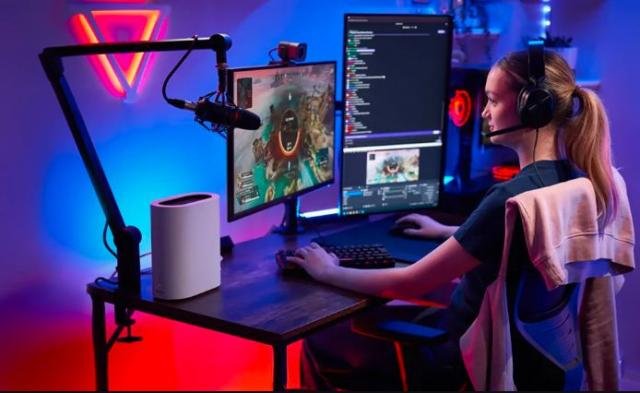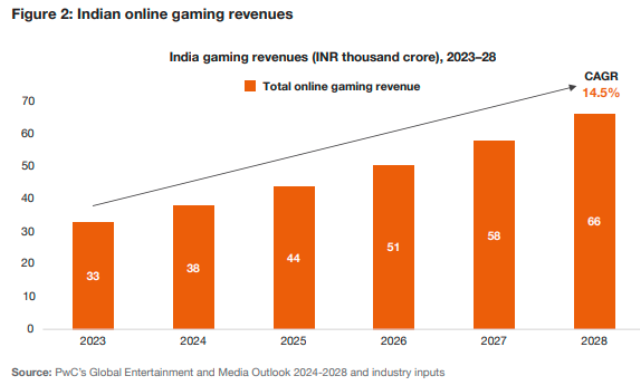According to research from PwC, the rapid growth in mobile internet availability is one of the key factors driving the gaming industry in the Asia Pacific region.
The Asia-Pacific region is expected to generate $181.8 billion in gaming revenues by 2028, or 54.4 percent of global gaming revenues, up from almost 48 percent in 2023, PwC predicts.
Gaming revenues in China, one of the countries in the Asia-Pacific region, are expected to overtake that of the US by the end of 2024. The launch of low-cost 5G smartphones powered by MediaTek chipsets, the growth of the young gaming-loving population in many regions, and the availability of cost-effective mobile internet has already reshaped the gaming sector in Asia Pacific.
Anku Jain, Managing Director of MediaTek India, revealed at the India Mobile Congress that the MediaTek Dimensity 9400 combines a second-generation All Big Core design with industry-leading AI, computing, gaming and photography capabilities.
Sanyam Chaurasia, Senior Analyst at Canalys, said in a recent report that the introduction of affordable 5G smartphones with a price range of ₹10,000 or $120 is expected to drive the growth of the Indian smartphone market by 2025.
Jay Chou, research manager for IDC’s Worldwide Client Devices Trackers, said the gaming market for PCs and monitors will reach 69.3 million in 2024, or 9 percent higher than in 2023. Gaming will account for 20 percent of total PC sales by 2028 and monitor market. .
PwC says the number of people in the Asia Pacific region subscribing to mobile internet services has more than doubled in the past decade to more than 1.4 billion. The region is known for the rise of mobile-first games.

Indian smartphone users, more than 650 million, spend money on data usage for entertainment and playing games. In 2023, Indians consumed 24.1 GB of data per month per person – a 24 percent increase from 2022. But there have been complaints about a lack of data speed in several rural areas of the country.
India has almost 600 million people under the age of 35 (in the period 2023-2024). India is the youngest country in the world, making it a hotbed of young gamers and vibrant talent pools that can design and build new games.
“The future of gaming depends on how games are developed and played. It is imperative to look at the way games generate and distribute revenue. Emerging technologies such as spatial reality (AR and VR), blockchain and AI are revolutionizing the industry,” said Rajesh Dhuddu Partner, Emerging Technologies at PwC.
Indian gamers are relying on the 5G mobile services offered by Bharti Airtel and Reliance Jio as India transitioned to a 5G country. Vodafone Idea and BSNL are gearing up to launch 5G.
Indian gamers, who depend on mobile internet speed, are worried as their telecom operators have concerns about 5G speed.
Airtel’s 5G download speeds have fallen from 300 Mbps in Q1 2023 to 239.7 Mbps in Q2 2024, mainly due to mobile network congestion.
Reliance Jio’s 5G customers experienced a download speed of 224.8 Mbps in Q2 2024.
Airtel’s 5G upload speed is 23.3 Mbps, according to Opensignal’s latest analysis. Reliance Jio’s upload speed is 12.7 Mbps.
Reliance Jio is investing in a 5G standalone access (SA) network using 700 MHz for rural areas and 3.5 GHz for urban centers, with mmWave (26 GHz) reserved only for high-capacity applications. The 700MHz band provides extensive coverage.
Airtel opted for a non-standalone access (NSA) approach, deploying 5G on top of existing 4G infrastructure for faster urban rollout.
5G availability in India, which provides a better gaming experience, has skyrocketed, with 5G users spending 52 percent of their time on 5G networks as of the second quarter of 2024.
The other trend identified by Opensignal is that smartphone users are spending less time on 4G, while time on 2G and 3G have not changed significantly, indicating that time on 4G is gradually being replaced by 5G. Gamers are waiting for better internet speed to spend more time gaming.
Baburajan Kizhakedath





